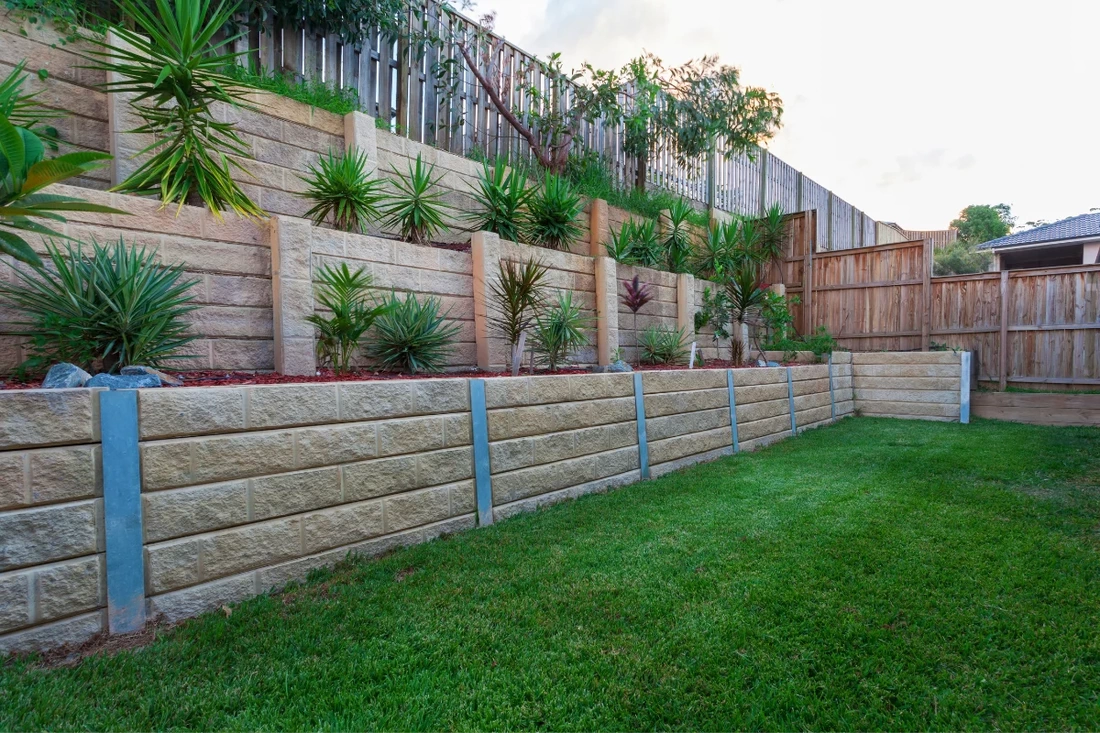|
Explore top Retaining Wall Materials for homeowners, including timber, mortared stone, poured concrete, and interlocking blocks to enhance your property. What are the different types of retaining wall materials?Timber Retaining WallsTimber retaining wall materials are popular among homeowners due to their affordability and ease of installation. They can be made from stacked timbers, 6x6s, or pressure-treated timber. While they may not last as long as other materials, regular maintenance can help extend their lifespan. Stacked Timbers for a Rustic AppearanceConsider using stacked timbers if you're looking for a rustic appearance in your retaining wall. This option is visually appealing and relatively easy to construct by stacking the wood pieces on top of each other and securing them with rebar or spikes. Pressure-Treated Timber for Added DurabilityPressure-treated timber is another excellent option that offers added durability compared to untreated wood. It's treated with chemicals that resist rotting and insect damage, ensuring your retaining wall will withstand soil and tons and stand firm against the elements over time. Mortared Stone Retaining WallsMortared stone retaining walls offer an attractive and durable option for investing in a longer-lasting solution. These walls require skilled masonry work but provide excellent stability and strength when properly constructed with the right footing. Aesthetically Pleasing Natural Stone LookOne of the main advantages of mortared stone retaining walls is their natural beauty. Using various types, shapes, and colors of stones can create a unique appearance that blends seamlessly into your landscape design while providing essential support to prevent soil erosion. Requires Professional Masonry ExpertiseWhile some homeowners may attempt building a mortared stone wall themselves, it's essential to recognize that this type of project requires professional masonry skills. A well-built wall ensures proper drainage, prevents collapse under heavy loads, and maintains structural integrity over time. It's best to consult an experienced contractor like Coquitlam Retaining Walls for expert advice on materials selection and construction techniques. Poured Concrete Retaining WallsPoured concrete retaining walls are known for their exceptional strength and low maintenance requirements. Although more expensive than some alternatives, these reinforced concrete structures provide reliable support without needing frequent upkeep beyond cleaning and inspection at regular intervals.
Interlocking Concrete Block Retaining WallsInterlocking concrete block retaining walls is a popular choice for homeowners seeking an easy-to-install, cost-effective solution. These mortar-free systems use crushed-stone footings to create sturdy structures that suit various design preferences.
Maintaining an interlocking concrete block retaining wall is relatively simple as well -- just clean and inspect it regularly to ensure its longevity. Still Need Help? Talk To Our Wall ProsThere are a variety of materials to pick from when selecting the perfect retaining wall. Regardless of which material you choose, it's important to consult with a professional contractor who can help guide you through the process from start to finish. At Coquitlam Retaining Walls, we specialize in creating custom solutions that meet our clients' unique needs while providing exceptional customer service every step of the way. If you're ready to get started on your next project using quality retaining wall materials, contact us today! FAQs About Retaining Wall MaterialsWhat is the best material for a retaining wall?The best material for a retaining wall depends on location, soil type, and desired aesthetics. Some popular options include timber, mortar stone, poured concrete, and interlocking concrete blocks. Each has its advantages; consult with a professional to determine which suits your needs. What five factors need to know when designing a retaining wall?
What material goes behind a retaining wall?The standard material is a granular backfill material like gravel or crushed stone. This allows proper drainage while providing support against lateral pressure from the soil. Using geotextile fabric can also help prevent soil migration into the backfill area. What are three common failures of retaining walls?Retaining Wall Materials can sometimes result in failures when not correctly installed. These are the most common causes:
0 Comments
|
Archives
September 2023
CategoriEs |

 RSS Feed
RSS Feed
